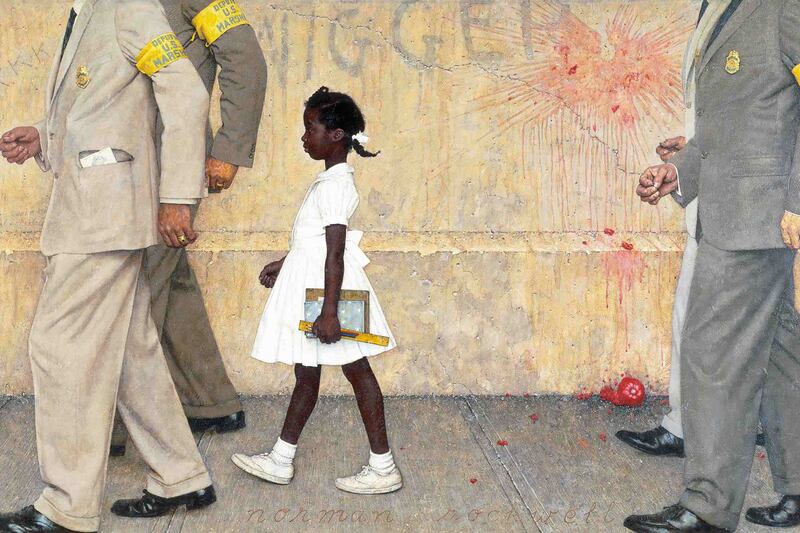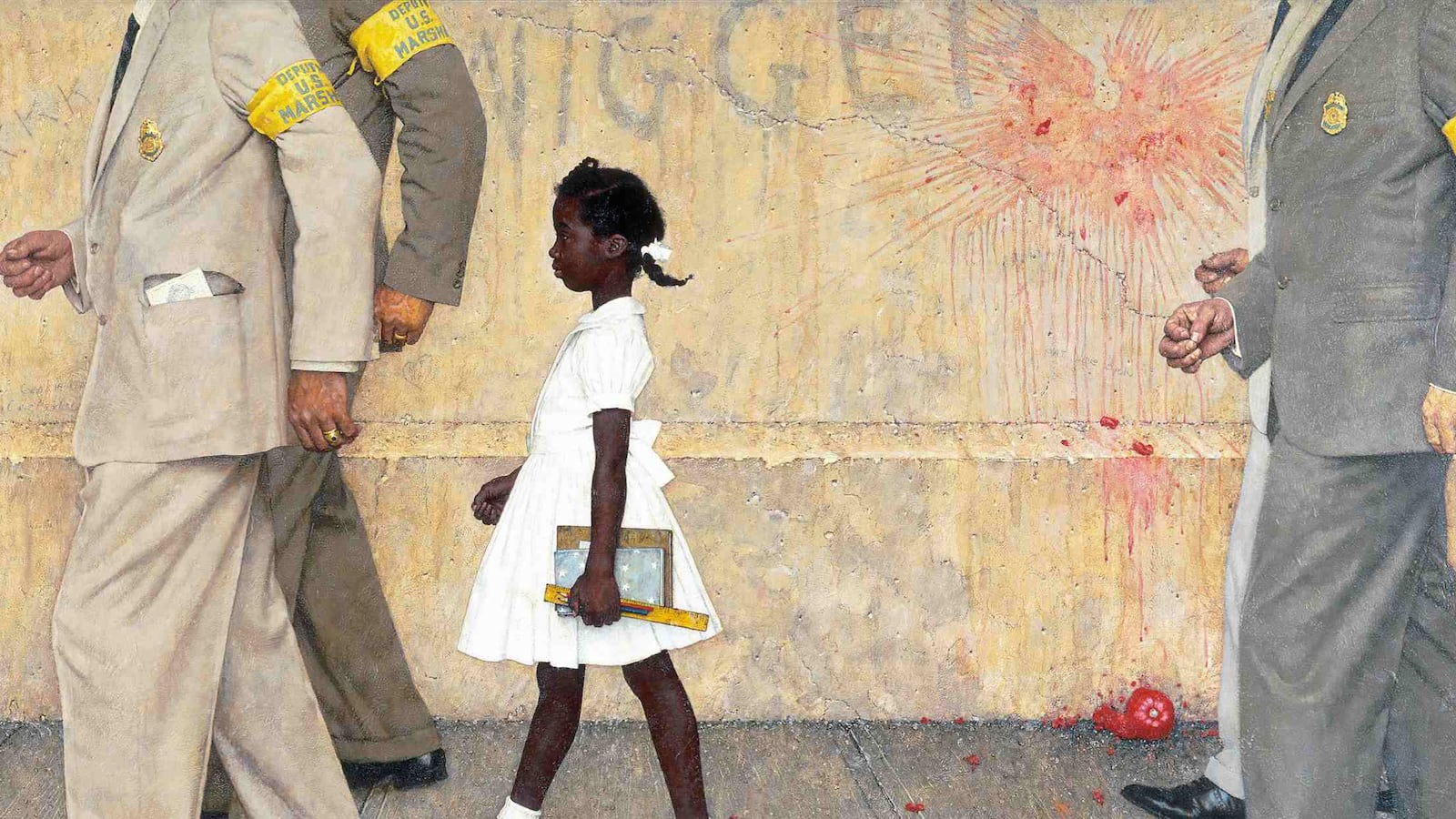Even if you accept that race is a social construct, separated from biology, it’s difficult to deal with it as a creation. Humans are tribal, and it feels natural to think that humanity has always been eager to categorize on the basis of skin color.

If there’s anything Henry Louis “Skip” Gates, Jr., accomplishes with “The Black Atlantic,” the first episode of The African Americans: Many Rivers to Cross—a new documentary mini-series that begins on PBS Tuesday at 8 p.m. ET—it’s to show that this view is an illusion. That is, in addition to inaugurating a broad history of black people—“the full 500 years of American history,” he says—the beginning of the series also gives viewers a valuable crash course in the history of race as an idea that was built.
The episode begins with three stories from early America. “The first known African in America came here with Spanish explorers in 1513,” explains Gates, as the camera sweeps over the semi-tropical landscape of modern-day Florida. “His name was Juan Guarido. He was free, and he left his mark on the New World.” Guardio fought with the conquistador Hernán Cortés in Aztec Mexico, and traveled to California to join the Spanish search for gold.
Estevanico, or “Esteban the Moor,” arrived on the continent in 1534. One of four survivors of a Spanish expedition gone wrong, he served as a “guide and translator” for his companions as they walked the landscape of today’s Texas. Esteban, however, was a slave.
The third story takes place nearly a century later, in early colonial Virginia. Anthony Johnson was captured in his native Angola by an enemy tribe and sold to European slavers. Johnson was brought to the Jamestown settlement as an indentured servant, where—despite his skin color—he eventually earned his freedom and land. “Anthony Johnson soon began to prosper,” says Gates in a voiceover, “He owned a 250-acre tobacco farm, he owned white indentured servants, and he even owned an African slave of his own.”
Johnson—and other black indentured servants—were able to succeed in 17th-century Virginia. But major change was on the horizon. As Johnson prospered, so did Virginia. “Within decades,” says Gates, “Jamestown had become the center of a booming tobacco economy that was desperate for labor. And this transformed slavery from a loose informal arrangement into a rigid racial system—a system in which a life like Anthony Johnson’s would be inconceivable.”
It’s worth unpacking this. As most Americans understand it, Africans were enslaved because they were black—English traders saw them as inferior, and made them slaves as a result. The true history is more complicated. As Gates points out with a fascinating detour to Sierra Leone—where he meets with the descendants of African slave traders—as many as 90 percent of African slaves were sold by other Africans. Slavery, after all, isn’t an unusual feature of human societies. And in Africa—like much of the world—it was based on ethnic ties and geopolitics. If you found yourself on the losing side of a tribal war, odds are good you would be sold into captivity. “Black Africans,” says Gates, “didn’t necessarily feel the bonds of skin color any more than white Europeans did.” That is, the color of their skin didn’t confer any particular solidarity or imply any shared experience.
It is true that 17th-century Europeans saw these Africans as inferior, and their skin color as strange—even, potentially, evil—but it wasn’t a causal relationship; Europeans didn’t see Africans as inferior because they were black. Blackness was just a quality of a particular group of “inferior” people. For Europeans, the key marker of who could be enslaved, as noted in the episode by historian Christopher Brown, was religion: “Europeans didn’t enslave other Europeans because Christians didn’t enslave other Christians.”
For a short period in early colonial Virginia, it was possible to flourish as an African, as exemplified by Anthony Johnson. But, in just a few decades, a combination of economic and social pressures transformed the landscape. Cheap labor was in high demand, and plantation owners struggled to find people who would work for low pay. There were attempts to extend the terms of English indentured servants, and to restrict their compensation, but they were unsuccessful.
African slavery was common in the New World—the Spanish- and Portuguese-held colonies of South America were ground zero for the bulk of the Atlantic slave trade. And the institution was understood as key to economic success. Its emergence in North America, however, was a response to these particular pressures. Indeed, it solved several problems: Africans were non-Christian, easily identifiable, and divorced from the culture of England. Yes, there were assimilated “negroes” like Johnson, but you could deal with that by making black skin the basis for enslavement.
To set this in stone, colonial governments passed a web of laws that made slavery a permanent condition for Africans. Here, Virginia is a key innovator. In 1650, Virginians blocked “Negroes”—again, skin color is the defining characteristic—from receiving “arms and ammunition.” In 1662, they tied the legal status of children to their mothers. If an enslaved woman gave birth to a slave, her child was also a slave. In 1667, Virginia declared that baptism “does not alter the condition to the person as to his bondage or freedom.”
In 1682, Virginia outright declared that all Negroes “imported into this country by either sea or by land” were hereby “adjudged, deemed and taken to be slaves.” And finally, in 1705, Virginia declared that “All servants imported and brought into the Country … who were not Christians in their native Country … shall be accounted and be slaves.” This law insured that any African brought to Virginian shores would be enslaved.
The American colonists were innovators. Faced with an economic challenge, they took slavery and made it an intergenerational institution based on physical difference. As Gates explained to me, “This was a relationship that developed over time, not a xenophobic hatred that goes back thousands of years.”
There is much more to The African Americans. In this first hour, Gates explores the early cultural developments of black people, their culinary traditions, and their relationship to the independence movement of late colonial America. For my part, however, this exploration of race and slavery stood apart as fascinating, and Gates and his contributors are unequivocal about its role in our history. “There is no United States without slavery,” emphasizes Christopher Brown. “There is even no independence movement without slavery.”
These are provocative claims, and I’m eager to see what the series does with them.






